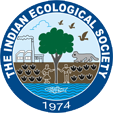Submission of Full-Length Original Research Articles of Accepted Abstracts
- Authors interested in having their manuscript considered for the special issue of the Indian Journal of Ecology should upload the full-length paper of their accepted extended abstract with an expression of interest and their conference abstract file number and payment of registration fee by August 01, 2024.
- Submission of the extended abstract and payment of the registration fee for the IESIC 2024 is the prerequisite for submitting a full-length paper.
- Membership of all authors of a full-length article is mandatory except for the author(s) who has (have) registered and paid the registration fee of the IESIC 2024 OR is a Life Member of the Indian Ecological Society.
- A full-length paper should be submitted soon after receiving acceptance of the extended abstract but not later than July 31, 2022, for consideration and its publication, after peer review, in the conference issue of the Indian Journal of Ecology [NASS Rating 5.79; Scopus Cite Score: 0.5; SCImago Journal Rank (SJR): 0.236 and indexed by Web of Science ).
Guidelines for Authors
The manuscript should be in Times New Roman with a font size of 12.
Title must be short and specific. The byline should comprise the name(s) of the author(s), complete postal address, and e-mail address. The title page must also include a running title of 4 or 5 words.
Abstract must be self-explanatory and should include the objectives, methodology, important points in the results, and a conclusion. It should not, in any case, exceed 200 words. The authors should also suggest up to 5 keywords below the abstract.
Introduction should be brief and include justification for undertaking the investigation and a short review of earlier work. Key references related to the work must be cited.
Materials and Methods should be clear and concise. This section can be subtitled for clarity.
Results should be written concisely in a logical order. All data must invariably be given in the metric and decimal systems. Data presented in figures should not be duplicated in tables and vice versa. All figures and tables should be cited in the text and should have concise and self-explanatory headings.
Discussion should be oriented towards explaining the significance and implications of the results obtained and should be well connected with the previous work in this direction.
Results and Discussion section may preferably be combined to avoid repetition.
References should be arranged alphabetically by the name of the first author and then by the second and third authors as necessary. Scientific Periodicals should not be abbreviated. Cite the full title of the journal.
Illustrations should be very clear for photographic reproduction. Line drawings and photographs should be separately grouped. Photographs should be of high quality (preferably in glossy print) with sharp details and contrasts. The publication cost of photographs will be charged separately at the prevailing market rates. Small figures should be grouped to fill a page and full-page figures should be larger than 26 x 36 cm.
Follow the journal guidelines for full-length paper at www.indianecologicalsociety.com

